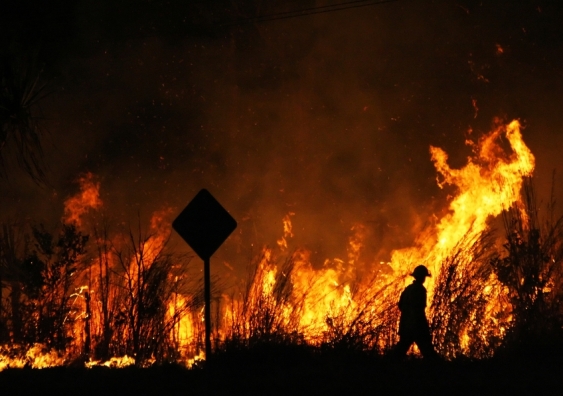From Analysis to Activity: Using Your BAL Report to Alleviate Bushfire Ris
From Analysis to Activity: Using Your BAL Report to Alleviate Bushfire Ris
Blog Article
Ensuring Bush Fire Protection With Correct BAL Record Evaluation
In the world of bush fire security, the precise evaluation of Bushfire Assault Degree (BAL) records stands as a keystone for safeguarding buildings against the terrible influence of wildfires. With environmental aspects and residential or commercial property qualities playing considerable duties in establishing the level of risk, an extensive understanding of BAL rankings becomes necessary. Nevertheless, the genuine essence lies not just in comprehending these records yet in understanding them successfully to develop customized fire defense methods. By diving into the value of BAL report analysis, we reveal a realm where notified decisions lead the course towards reinforcing residential or commercial property security and strength in fire-prone regions.
Understanding Bushfire Attack Level (BAL)
In the realm of bushfire defense, comprehending the Bushfire Attack Level (BAL) is extremely important for making certain effective reduction methods. Recognizing the BAL rating of a residential or commercial property is vital for building proprietors, policymakers, and building contractors to apply proper actions to guard against bushfire dangers.

Importance of BAL Report Analysis
A crucial element in bushfire defense preparation entails the thorough analysis of BAL reports to evaluate the prospective threats and figure out suitable reduction methods. BAL reports give vital information regarding the potential influence of bushfires on a building based upon different elements such as plants kind, range to prospective fire threats, and slope of the land. Examining these reports with precision is paramount in establishing reliable bushfire protection procedures tailored to the particular risk profile of a home.
Implementing Fire Security Measures
Applying effective fire security procedures is critical for safeguarding properties in bushfire-prone areas. This includes cleaning combustible plant life, such as dry leaves and branches, within a specific span of the residential or commercial property.
In addition, having a well-maintained and ample water supply, such as a container or pool, can assist firemens in their efforts to protect the home. BAL Report. Overall, applying a combination of these fire protection procedures can substantially increase the opportunities of guarding properties throughout bushfire events.
Mitigating Threats in Fire-Prone Locations
To fortify properties versus bushfire dangers, a tactical concentrate on mitigating threats in fire-prone areas is necessary. Mitigating risks in fire-prone locations includes a comprehensive strategy that incorporates different procedures to reduce the chance and impact of bushfires. One crucial facet of risk mitigation is keeping defensible area around buildings by clearing combustible greenery, guaranteeing sufficient spacing in between frameworks and trees, and using fire-resistant landscaping practices. Additionally, carrying out ember-proofing procedures such as mounting steel mesh displays on home windows and covering roof covering cavities can help avoid cinder attacks and reduce the danger of area fires.
Additionally, building or retrofitting buildings with fire-resistant materials and ensuring proper upkeep of roofs, gutters, and external cladding can significantly enhance the residential or commercial property's durability to bushfires. Establishing and exercising a bushfire emergency strategy with all residents, including discharge page treatments and interaction approaches, is likewise important in mitigating risks properly. By embracing an aggressive method to risk why not try these out reduction in fire-prone locations, homeowner can much better secure their possessions and boost overall bushfire preparedness.
Ensuring Home Safety and Resilience
Ensuring the security and durability of properties in fire-prone areas requires an unwavering dedication to durable precautionary procedures and calculated planning. Residential property security starts with executing reliable steps to decrease fire risks. This consists of preserving a defensible space around the residential property by getting rid of flammable plant life, making sure proper upkeep of seamless gutters and roofing systems, and utilizing fire-resistant building products. Normal maintenance of firefighting tools, such as pipes and automatic sprinkler, is likewise crucial to residential property strength.
Durability, on the various other hand, includes the ability of a building to recuperate and withstand from a bushfire. By proactively attending to these elements, property proprietors can better safeguard their properties and loved ones from the hazard of bushfires.
Conclusion
To conclude, guaranteeing bushfire defense through appropriate BAL record analysis is critical for understanding the degree of risk presented by bushfires and implementing needed fire protection actions. By alleviating risks in fire-prone locations and ensuring residential property safety and durability, areas and people can better get ready for and react to bushfire occasions. It is critical to prioritize fire security actions to secure lives and property in these high-risk environments.
In the realm of bush fire defense, the careful analysis of Bushfire Assault Degree (BAL) records stands as a cornerstone for securing homes versus the terrible site link impact of wildfires (BAL Report). Comprehending the BAL ranking of a residential or commercial property is vital for property home builders, policymakers, and proprietors to carry out proper actions to protect versus bushfire hazards

BAL records give important details about the prospective impact of bushfires on a residential property based on various elements such as plants kind, distance to possible fire hazards, and incline of the land (BAL Report). In general, carrying out a mix of these fire defense measures can substantially increase the possibilities of securing properties during bushfire events
Report this page